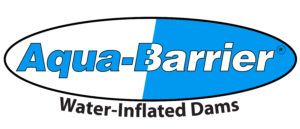The New Year means new things and everything is reset like the changing of the seasons. New champions in sports. New songs from preferred artists. New seasons of favorite shows. Though we may not look forward to it, now is also the time to prepare for the new storms 2017 may bring. Starting now will ensure you are protected all year, no matter what nature has in store. As your storm preparations begin, have you ever wondered how hurricanes are named?
Storm Names: A Brief History
When hurricanes first began to be tracked and reported in the United States, names were chosen using the geographical area and year of the storm. This proved confusing and cumbersome to maintain, however, and a better method was needed. Military meteorologists during World War II began paying tribute to their wives and girlfriends by naming storms over the Pacific after them. In 1954, the National Weather Service formalized this practice of giving women’s names to storms.
Eventually, it was found offensive and finally in 1979, the National Weather Service adopted the modern practice of utilizing an alternating inventory of men’s and women’s names. This list is now governed by the World Meteorological Organization and rotates every six years, retiring only the names of devastating storms. Most recently, this list of names has been expanded to reflect the many diverse regions the storms affect. In the event there are more than 21 named tropical storms in any given year, the names are taken from the Greek Alphabet. Here’s the list for 2017:
Arlene, Bret, Cindy, Don, Emily, Franklin, Gert, Harvey, Irene, Jose, Katia, Lee, Maria, Nate, Ophelia, Philippe, Rina, Sean, Tammy, Vince, Whitney
Preparing for Storms
It is important to begin preparations now to protect your home and business from hurricanes this year. One of the major threats these kinds of storms pose is the danger of major flooding. The most effective flood protection is planned far in advance, and flood insurance, while a definite must, is not preventative. Consider the benefits of the Water Inflated Property Protector to protect your home or business from flooding. The WIPP® System is a flood barrier that can be used in both residential and commercial areas. It protects your property from invasive water better, easier, and more environmentally friendly than sandbags. Easy to prepare, reusable, and easy to store, transport and handle, WIPP® is the ultimate flood barrier.
During one of last year’s devastating storms, although installed late in the game, watch as the WIPP® System protected this home in Fort Bend County. While the system was not able to prevent flooding completely due to the timing of the install, it still provided protection from even more water overwhelming the home.
Flood Protection Begins Now
Your best chance to protect your home or business from flood damage is now. Flood protection is much more effective if installed prior to the hour of need. Hydrological Solutions is your expert in flood protection and ready to help you prepare for this year’s storms. Contact Us for more information on how to protect your home or business this year.


